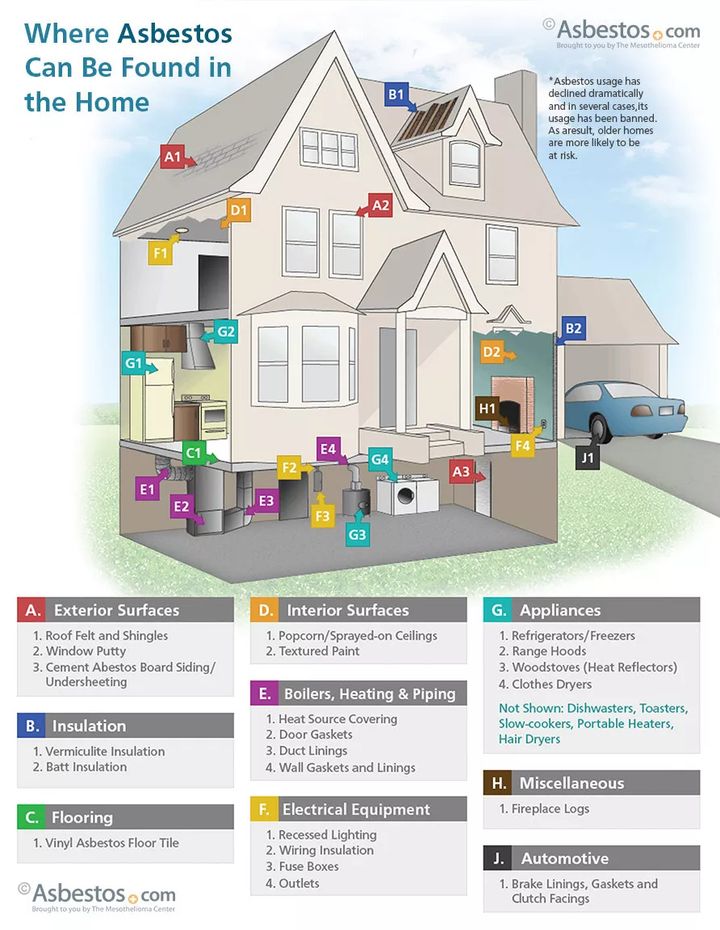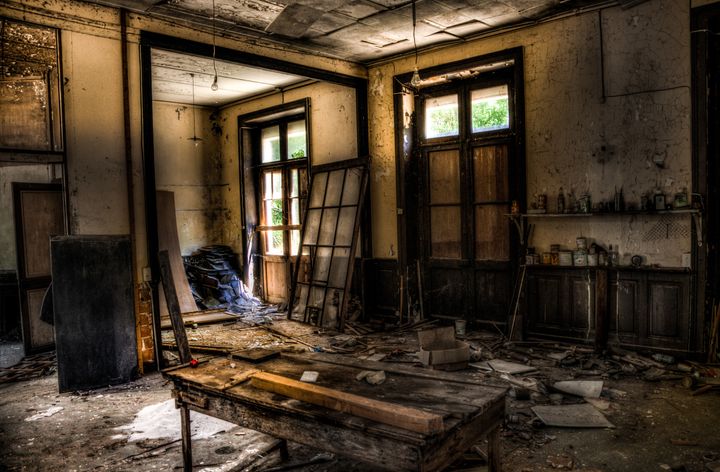
Asbestos can be found lurking in ceilings, behind walls and in floor tiles.
How often do you hear "asbestos" when you’re on a three-day HGTV binge?
It feels as if every other "Property Brothers" episode features an unsuspecting couple waiting to move into their first home together only to find asbestos lurking in the ceiling tiles. In most episodes, the thousand-plus dollar price tag of the asbestos abatement escalates tension between the homeowners and the show's real estate brothers.
But what does this mean for actual home buyers? Is asbestos hiding in that many homes? And most importantly, is it really that dangerous?
A Basic Overview: What Is Asbestos?
Asbestos, not surprisingly, is more than a buzzword you hear in home improvement shows. The naturally occurring mineral is highly toxic. It's responsible for a variety of cancers such as mesothelioma.
For decades, manufacturers used asbestos for its remarkable strength, heat resistance and insulating properties. Decades passed before the dangers of asbestos were shared publicly, but by then, millions of homes and public buildings contained the carcinogen, including that fixer-upper you just purchased as your first home or property to flip.
In fact, if your home was built between 1930 and 1977, there’s a good chance it contains asbestos in one or more locations.

Asbestos can be hiding in many different locations throughout your home. Check out a few of the most common places here.
This online asbestos guide offers lots of information on DIY projects, as well as raises awareness about asbestos.
Think You Have Asbestos at Home? Here's What You Do
Finding asbestos at home is akin to playing a game of hide-and-seek.

A home renovation, demolition and poor building maintenance may release microscopic asbestos fibers into the air.
In most cases, it is not visible to the human eye. The U.S. Environmental Protection Agency recommends that if you think a product in your home contains asbestos, always treat it as if it does. So what should you do if you suspect there's asbestos in your home?
Step one: Don’t panic!
While asbestos is always problematic, it doesn’t become overtly dangerous until it is disturbed. Think home renovation or DIY project. When asbestos is disturbed, it breaks into microscopic fibers that float through the air. It’s when these airborne fibers are inhaled or ingested that the risk for an asbestos-related disease arises.
Step two: Contact an asbestos abatement specialist.
If you’re anything like me, far too often you put off attending to issues in your home.
Whether you're limited by cost or time, asbestos abatement cannot fit in that same category. If there is exposed asbestos somewhere in your home, contact a specialist ASAP. Every single day asbestos fibers flurry around your home is another chance you or a loved one may be inhaling it. It’s this kind of prolonged exposure that leads to a laundry list of diseases such as mesothelioma or asbestosis.
Step three: Tell your physician.
Once again, I want to remind you not to panic. Yes, asbestos is dangerous. Yes, it can cause cancer, but there is hope. Mesothelioma is relatively rare. Typically, one-time asbestos exposure will not cause you major harm, but it’s important to monitor for any possible signs or symptoms after any type of exposure.
Mesothelioma has an unusually long latency period. There are few diseases where it takes decades for symptoms to appear. By diligently monitoring your health for any changes, you can ensure a possible early diagnosis, making you eligible for a variety of treatment options and a better prognosis.

The most common symptoms of pleural mesothelioma overlap with a variety of other health conditions. If you are concerned, be sure to see a physician quickly.
Considering a Home Renovation?
Don’t let asbestos stop you from your home renovation goals; just remember to be diligent at all times. Whether it means wearing protective gear or calling an abatement specialist, it is always better to be safe than sorry.
There is so much more to asbestos than a buzzword. If you have any questions or concerns, don’t hesitate to ask.
Disclaimer: I am the Social Media Specialist for The Mesothelioma Center at Asbestos.com.
